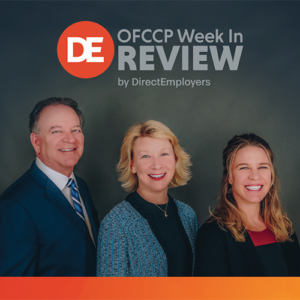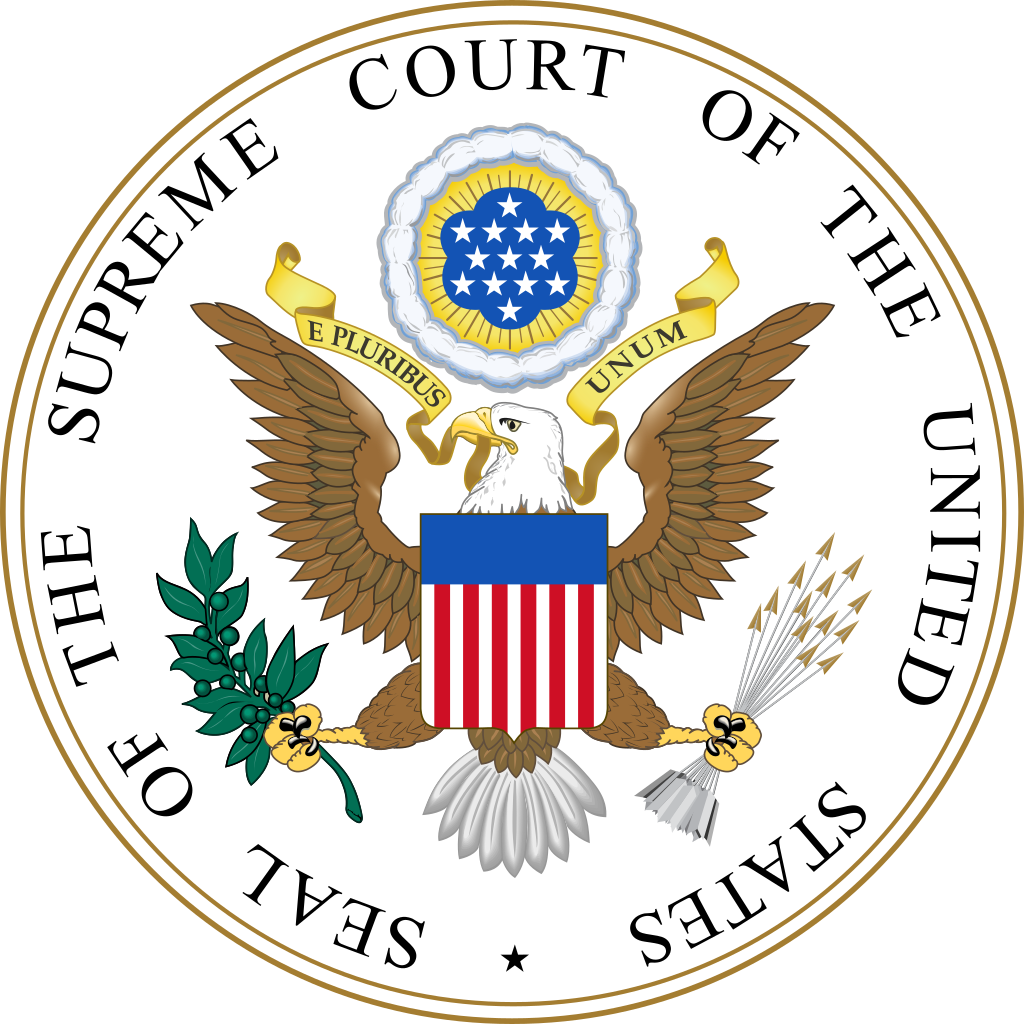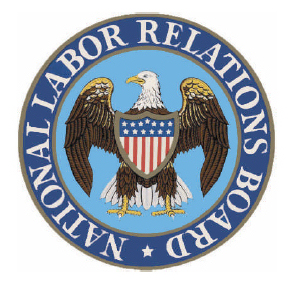
- Fifth Woman in History Confirmed to the U.S. Supreme Court
- EEOC to Discuss MOU with USDOL & USDOJ
- Is Scabby the Rat Unlawful?
- Two Civil Rights Groups Sued The Trump Administration To Stop EO 13950
- OFCCP Director of Policy & Program Development Provided Agency Updates
- Comment Now on E-Verify
- Comment Now on OFCCP Construction Recordkeeping Requirements
- NLRB Boasts Great Progress in FY 2020
- NLRB Enhanced its Website
- Led by California, three States Sue The EEOC In an Attempt to Force Access to EEO-1 Component 2 “Hours Worked” and “Pay Data”
- New Regulations Outlining EEOC Guidance
Monday, October 26, 2020: Fifth Woman in History Confirmed to the U.S. Supreme Court

According to a statement from The White House, “…she will bring a valuable new perspective to our High Court…” as she is:
- the first mother of school-aged children (seven to be exact – see the introduction of her family during Day One of her Confirmation Hearing at 1:33)to become a Supreme Court Justice,
- the mother of a child with special needs (her youngest child has Downs Syndrome), and
- the only current justiceto have a law degree from a school other than Harvard or Yale. She graduated at the top of her class from Notre Dame Law School in Indiana, the nation’s second oldest Catholic Law School (behind Saint Louis University Law School, in St. Louis).
Established by the United States Constitution, the Supreme Court began to take shape with the Judiciary Act of 1789. To date, 114 justices have served on the bench. Of those, 110 have been men (108 white, two black). Coney Barrett is the fifth woman to serve on the Supreme Court. Replacing Justice Ruth Ginsburg, she joins Justices Sonia Sotomayor and Elena Kagan. President Ronald Reagan nominated the first woman to the Supreme Court in 1981: Sandra Day O’Connor (now 90 years old), who was easily confirmed to the SCOTUS and retired from the Court in 2006 at age 76.
Monday, October 26, 2020: EEOC to Discuss MOU with USDOL & USDOJ

Pursuant to the Sunshine Act, the public may listen to the conference. On November 1st, the Agency will post the listening instructions on its website. Closed captioning services will be available.
The Agenda
- Memorandum of Understanding among the U.S. Department of Labor, the Equal Employment Opportunity Commission, and the U.S. Department of Justice.
EEOC Commissioner Burrows (D), one of two Democrats now on the Commission, has become a gadfly critic of the Commission since Republicans took control of it. Through Commissioner Burrows, the public often now learns of internal Commission deliberations she opposes and publicizes through public “statements” she releases to media channels. In her latest such statement, Commissioner Burrows has shared her opposition to a discussion draft of the the MOU now circulating within the Commission:
“While I strongly support inter-agency coordination, the proposed MOU threatens to undermine the independence of the Commission as the primary federal agency charged with protecting American workers against workplace discrimination.”
Backstory
In 1978, then President Jimmy Carter created the OFCCP out of 17 and then 11 federal government procurement agencies with Affirmative Action and EEO investigators. President Carter’s resulting design of the civil rights agencies was to cause all Charges alleging violations which Title VII covered to be deferred to the EEOC OTHER THAN “class-type” Complaints lodged with the newly formed OFCCP. NOTE: they are called “Complaints” at OFCCP and “Charges” at the EEOC. In President Carter’s design, the EEOC would be burdened with almost all of the individual Charges, thus freeing OFCCP up to not only focus on systemic discrimination issues, but to also pick and choose corporate targets of opportunity through OFCCP’s Compliance Evaluation authority.
With the passage of the ADA in 1990, and with the operation of Title I (the employment discrimination section of the ADA applicable to private workplaces) on April 26, 1992, OFCCP’s large (3,000ish/year) Complaint docket shrank for the next 30 years to fewer than about 300 Complaints per year. This modern Complaint inventory was made up largely of Complaints Protected Veterans filed pursuant to VEVRAA (the Vietnam Era Veterans Readjusment Assistance Act of 1974), a handful of “class-type” Complaints arising under OFCCP’s Executive Order 11246 authority (which the MOUs over the years allowed OFCCP to retain in its Complaint inventory and to investigate) and a handful of disability Complaints which fell outside of the EEOC’s ADA jurisdiction (often federal Government contractors with fewer than the 15 employees necessary for a Charging Party to invoke the EEOC’s ADA jurisdiction). NOTE: The EEOC does not have legal authority pursuant to VEVRAA, making OFCCP “the only game in town” legally authorized to intake and investigate VEVRAA Complaints.
All the MOUs between and OFCCP and the EEOC espoused the Carter design…and still do. However, in the Obama Administration, OFCCP in 2015 quietly began to receive and investigate individual Complaints (which come into their offices every day). Without public notice and while denying that it was intaking individual Complaints, OFCCP nonetheless in fact began to receive and intake Complaints based on claims of Sexual Orientation and/or Gender Identity as it anticipated going to Final with its Sex Discrimination Rules on June 15, 2016. Those Rules uniquely empowered the OFCCP to proceed with Sexual Orientation and Gender Identity discrimination investigations while the EEOC waited for the SCOTUS to clarify whether the Congress had made in1964 Sexual Orientation and Gender Identity discrimination unlawful pursuant to Title VII of the 1964 Civil Rights Act.
OFCCP’s Complaint Investigation Now Comes Full Circle
Now the issue of OFCCP investigating individual Complaints under Executive Order 11246 has come full circle with Commissioner Burrows criticizing what she reports to be a plan embedded in the draft MOU under discussion with OFCCP to do exactly what the Obama OFCCP did and the Trump OFCCP has continued. Indeed, if Commissioner Burrows’ statement accurately reports the MOU’s intentions, it appears that the EEOC and OFCCP are about to codify the OBAMA OFCCP practice of permitting OFCCP to keep individual Complaints arising under EO 11246 in its inventory to investigate.
Impact on Contractors
There is one significant difference in OFCCP investigations of individual Complaints verses EEOC investigations of the same Complaints. OFCCP Rules require OFCCP to investigate ALL EO 11246 Complaints in its inventory while the EEOC is under no such obligation. In fact, the EEOC historically investigates only about 30% of its inventory since the EEOC finds only about 20% of all Charges filed with it to have “reasonable cause” to believe a violation of Title VII may have occurred. So, instead of investigating, the EEOC typically dismisses without investigation most of the Charges it receives pursuant to the Commission’s Title VII legal authority. If OFCCP were to accept into its inventory those same Complaints, covered federal Government contractors would respond to and defend potentially thousands more meritless Complaints arising under EO 11246 than would otherwise be the case, absent a change in OFCCP’s rules to allow only permissive investigations.
Meeting Attendance Details
The Commission agenda is subject to revision. The Agency will post a recording and transcript of the meeting on its website.
For additional information, contact Kimberly Smith-Brown, (202) 663-4191 (voice) or (800) 669-6820 (TTY).
Tuesday, October 27, 2020: Is Scabby the Rat Unlawful?

In the notice and invitation to file briefs, the NLRB seeks public input on the following questions:
1) Should the Board adhere to, modify, or overrule Carpenters Local 1506 (Eliason & Knuth of Arizona), 355 NLRB 797 (2010), and Sheet Metal Workers Local 15 (Brandon Regional Medical Center), 356 NLRB 1290 (2011)?
2) If you believe the Board should alter its standard to determine what conduct constitutes unlawful picketing under Section 8(b)(4), what should the standard be?
3) If you believe the Board should alter its standard to determine what nonpicketing conduct is otherwise unlawfully coercive under Section 8(b)(4), what should the standard be?
4) Why would finding that the conduct at issue in this case violated the National Labor Relations Act under any proposed standard not result in a violation of the Respondent’s rights under the First Amendment?
Chairman Ring and Members Kaplan and Emanuel joined in issuing the notice and invitation; Member McFerran dissented.
Deadlines
Parties and amici must file briefs (not exceeding 25-pages) with the NLRB in Washington, DC, on or before November 27, 2020, and December 28, 2020, respectively. The parties may file responsive briefs (not to exceed 15 pages) on or before January 11, 2021. Briefs must be filed electronically by going to www.nlrb.gov and clicking on “E-Filing.” If assistance For assistance in E-Filing, contact the Office of the Executive Secretary at 202-273-1940.
Thursday October 29, 2020: Two Civil Rights Groups Sued The Trump Administration To Stop EO 13950

Nothing in this Complaint seeks to complain about or limit OFCCP’s prosecution of federal contractors which deliver training programs unlawful pursuant to Executive Order 11246. Indeed, OFCCP’s Complaint Hotline continues to receive inquiries and Complaints at a rapid pace about contractor training programs (see related story in this Week in Review immediately following this story reporting the remarks of OFCCP’s Policy Director to Disability:IN). Moreover, as the Week In Review bonus feature also reports, OFCCP has now doubled-down on investigations of federal contractor training programs by also announcing last week a coming wave in 2021 of “D&I Focused Reviews.”
Thursday, October 29, 2020: OFCCP Director of Policy & Program Development Provided Agency Updates

Focused Reviews
- Section 503 Reviews are complete. An annual report summarizing these Reviews is in the works and will be out by year-end; if not, then the first of the new year.
- VEVRAA Reviews are on-going. Once a full cycle of Reviews is complete, the Agency will release an annual report. Like the 503 Reviews, the Agency intends to release additional training, including planned interview questions and specifics on the Review itself.
- Accommodation Reviews will begin by reviewing religious accommodations.
- Promotion Reviews will look at hiring and steering issues. The definition of promotion is in the Federal Contract Compliance Manual (FCCM); however, through recent contractor discussions, the Agency has found that the definition of promotion varies vastly. As such, the Agency plans to release additional FAQs on the definition.
- Diversity & Inclusion Reviews are the latest to hit the headlines. A landing page with additional information is in the works. The anticipated time frame for these Reviews to appear on a CSAL (Corporate Scheduling Announcement List) is “probably in the spring of 2021.”
Note: The 2020 Scheduling List has not yet begun, as each region is still working through the 2019 List.
Recognition Programs
- PepsiCo & CVS were the EDI (Excellence in Disability Inclusion) winners for the pilot year. Expect messaging soon about the next round of awards and what the “year of engagement” entails for the winners.
Rulemakings
- A busy coming year! The Agency continues to update its website with new “landing” pages to pull information together in a one-stop effort. These updates include, among others, Directives and FAQs. Coming soon… a new PDN (Pre-determination) Rule and a new Religious Exemption
EO 13950/RFI
- The Agency established a “landing” page to house current information, including the hotline information. There have been 142 inquiries to date. OFCCP is developing internal procedures to manage the complaints and Compliance Officer training.
- The Request for Information is live. There have been 27 submissions to date. See our story last week, OFCCP Seeks Information on Contractor D&I Training Programs, for the full scoop.
Friday, October 30, 2020: Comment Now on E-Verify

Written comments and suggestions from the public and affected agencies may address one or more of the following four issues:
- Evaluate whether the proposed collection of information is necessary for the proper performance of the functions of the agency, including whether the information will have practical utility;
- Evaluate the accuracy of the agency’s estimate of the burden of the proposed collection of information, including the validity of the methodology and assumptions used;
- Enhance the quality, utility, and clarity of the information to be collected; and
- Minimize the burden of the collection of information on those who are to respond, including through the use of appropriate automated, electronic, mechanical, or other technological collection techniques or other forms of information technology, e.g., permitting electronic submission of responses.
Submit a formal Comment on or before November 30, 2020.
Friday, October 30, 2020: Comment Now on OFCCP Construction Recordkeeping Requirements

OFCCP is particularly interested in comments which:
- Evaluate whether the proposed collection of information is necessary for the compliance assistance functions of the agency that support the agency’s compliance mission, including whether the information will have practical utility;
- Evaluate the accuracy of the agency’s estimate of the burden of the proposed collection of information, including the validity of the methodology and assumptions used;
- Enhance the quality, utility, and clarity of the information to be collected; and
- Minimize the burden of collecting information on those who respond, including using appropriately automated, electronic, mechanical, or other technological collection techniques or other forms of information technology, e.g., permitting electronic submissions of responses.
Submit written comments on or before December 29, 2020, to:
Tina Williams, Director, Division of Policy and Program Development
Office of Federal Contract Compliance Programs
200 Constitution Avenue NW, Room C-3325
Washington, DC 20210
Friday, October 30, 2020: NLRB Boasts Great Progress in FY 2020

The Board issued 374 decisions in contested cases during FY 2020.
Under the Case Expediting Program (begun in September 2018), the Board’s focus in FY 2020 was issuing decisions in the oldest pending cases. As a result, the median age of pending cases was reduced from 157 days to 85 days, a 46% reduction. The number of cases pending before the Board is at its lowest level in over 40 years.
Regional Office Statistics
- Reduction of the time from filing to disposition from 90.0 to 73.8 average days, a decrease of 18% since FY 2018
- Reduction of the time from informal settlement to final disposition of an unfair labor practice case from 172.6 to 136.3 average days, a decrease of 21% since the end of FY 2018
- Settlement rate of 96%
- Resolution of over 4,666 cases before issuing complaint and over 570 cases post-complaint
- Achieved compliance in over 179 cases
Chairman John F. Ring stated, “One of the most important responsibilities the Board has in fulfilling its mission is to get parties their decisions as soon as possible. I am proud of the Board staff that has worked so diligently to reduce the case backlog particularly among our oldest cases.”
Friday, October 30, 2020: NLRB Enhanced its Website

Some of the new features include:
- MyNLRB – Allows stakeholders to personalize their website experience with targeted regional news and case information and access to saved searches.
- Advanced Data Search – Provides stakeholders the ability to create, save, and download ad-hoc searches for case and election data.
- Spanish Translations – Provides Spanish translations of approximately 40-50 pages of the public website with the ability for users to switch back and forth between Spanish and English.
- Interactive Map – Provides Unfair Labor Practice (C) and Representation (R) case data via an interactive map interface.
NLRB stakeholders can click “What’s New” on the homepage for more details about the updated Agency public website.
Friday October 30, 2020: Led by California, three States Sue The EEOC In an Attempt to Force Access to EEO-1 Component 2 “Hours Worked” and “Pay Data”
It is a five count Complaint spread across 28 pages seeking access to EEO-1 data for each of the companies within their respective states, including the recently collected controversial Component 2 “Hours Worked” and “Pay Data.” The California Attorney General’s Office and California DFEH lawyers (lead by former OFCCP San Francisco Regional Director Janette Wipper; now the General Counsel of the CA DFEH) took the lead to file the Complaint in the Northern District of California and asked for assignment to a federal Judge in either the San Francisco or Oakland Division.
The Complaint alleges that before March 2020, the EEOC had a practice of sharing with all state deferral agencies, like the plaintiffs, ALL EEO-1 information for all of the companies operating within their respective states. After March 1, 2020, the plaintiffs allege that the EEOC adopted a new practice of delivering EE0-1 information to the states ONLY as to companies as to which a Complaint of unlawful discrimination was pending. The case boils down to the question whether the EEOC was historically delivering complete EEO-1 information to the states out of its “discretion,” or because Title VII so required?
The three state plaintiffs complain the EEOC’s new policy to limit state access to the complete EEO-1 report violates the language of Title VII which they claim affords them the access to complete EEO-1 data which they have historically enjoyed. The states claim that this sudden denial of access is a violation of the federal Administrative Procedure Act for five different reasons:
- “Agency Action Unlawfully Withheld under Title VII, 42 U.S.C. § 2000e-8(d)”
- “Agency Action Contrary to Statutory Authority under Title VII, 42 U.S.C. § 2000e-8(d)”
- “Ultra Vires Agency Action”
- “Arbitrary and Capricious Action”
- “Issuance of an Agency Rule Without Observance of Procedure Required by Law…”
The APA requires formal Rulemaking to change major public policies. The three states are also attempting to use the APA to require the Court to enforce Title VII’s language to the advantage of the states.
The states cite to the following portion of Title VII as the source of their alleged authority to access the complete EEO-1 data the EEOC obtains, organizes, and stores: 42 U.S.C. § 2000e-8(c) & (d). Section 2000e-8(c) simply provides the EEOC with the legal authority to collect information from employers to assist the EEOC with its mission and is the source of authority for the Commission to require EEO-1 information.Title VII’s Section 2000e-(8)(d) is the core of the dispute and states, in its totality:
“(d) Consultation and coordination between Commission and interested State and Federal agencies in prescribing recordkeeping and reporting requirements; availability of information furnished pursuant to recordkeeping and reporting requirements; conditions on availability
In prescribing requirements pursuant to subsection (c) of this section, the Commission shall consult with other interested State and Federal agencies and shall endeavor to coordinate its requirements with those adopted by such agencies. The Commission shall furnish upon request and without cost to any State or local agency charged with the administration of a fair employment practice law information obtained pursuant to subsection (c) of this section from any employer, employment agency, labor organization, or joint labor-management committee subject to the jurisdiction of such agency. [yellow highlighting added] Such information shall be furnished on condition that it not be made public by the recipient agency prior to the institution of a proceeding under State or local law involving such information. If this condition is violated by a recipient agency, the Commission may decline to honor subsequent requests pursuant to this subsection.”
Editorial Note: This is an interesting statutory interpretation case. The above language authorizing the states to obtain “information obtained pursuant to subsection (c)” [meaning EEO-1 data, among other things] … “from any employer” … “subject to the jurisdiction [emphasis added] of the agency” is ambiguous. Technically, California’s DFEH does not have jurisdiction over an employer in California until the DFEH has either received a “Complaint” of alleged unlawful discrimination or has launched an investigation of an employer. However, the phrase “subject to the jurisdiction” [emphasis added] could be interpreted broadly to mean that the employer is subject to the DFEH’s jurisdiction even in the absence of DFEH’s formal assertion of jurisdiction in an investigation merely because the employer could at some point in time become “subject to” the jurisdiction of the DFEH.
This litigation will likely take two to three years, including appeals, to resolve itself…unless of course:
- former Vice President Biden wins tomorrow’s election, and
- the Democrats also win control of the Senate (so as to allow a Democrat President’s federal government appointees subject to the “Advice and Consent” of the Senate to get quickly confirmed and seated in their agencies, and
- it is after July 1, 2022 when Chair Dhillon’s EEOC term will end and a then Democrat President could appoint a Democrat EEOC Commissioner, thus obtaining a 3-2 majority of Democrat Commission Members who could then vote to change the state access to EEO-1 data rule.
If the states do win the legal or political right to access the EEOC’s Component 2 “Hours Worked” and “Pay Data,” data distribution restrictions applicable to the EEOC will also apply to the states, as you see also recited in paragraph 2000e-8(d), above. HOWEVER, the EEOC’s confidentiality requirement extending to all data it receives, would NOT limit the states (or the Commission for that matter) from releasing to the public research reports of pay data not identifying particular employees or particular companies. Survey reports lambasting an industry or a particular geographic group of companies (i.e. “all manufacturers,” or “all Michigan manufacturers,” or “Tech companies,” or all “Silicon Valley Tech companies”) are permissible and fair game for publication.
The availability of Component 2 pay data will therefore most likely be a Week in Review story for at least the next five years…and just when you thought it was safe to get back in the water…all that was behind you!
Monday, November 2, 2020: New Regulations Outlining EEOC Guidance

- make guidance documents readily available to the public,
- ensure that guidance is treated as non-binding and does not overstep legal authority,
- require a notice and public comment period for significant guidance, and
- establish a public petition process for the issuance, amendment, or repeal of guidance.
The Final Rule amends 29 CFR chapter XIV by adding part 1695 to read as follows:
Part 1695 – Guidance Procedures
Sec.
1695.0 Applicability.
1695.1 Definitions.
1695.2 Guidance requirements.
1695.3 Good faith cost estimates.
1695.4 Significance determination.
1695.5 Significant guidance requirements.
1695.6 Notice and public comment.
1695.7 Petitions.
1695.8 Public access to current guidance documents.
1695.9 Rescinded guidance.
1695.10 No judicial review or enforceable rights.
THIS COLUMN IS MEANT TO ASSIST IN A GENERAL UNDERSTANDING OF THE CURRENT LAW AND PRACTICE RELATING TO OFCCP. IT IS NOT TO BE REGARDED AS LEGAL ADVICE. COMPANIES OR INDIVIDUALS WITH PARTICULAR QUESTIONS SHOULD SEEK ADVICE OF COUNSEL.
SUBSCRIBE.
Compliance Alerts
Compliance Tips
Week In Review (WIR)
Subscribe to receive alerts, news and updates on all things related to OFCCP compliance as it applies to federal contractors.
OFCCP Compliance Text Alerts
Get OFCCP compliance alerts on your cell phone. Text the word compliance to 55678 and confirm your subscription. Provider message and data rates may apply.



